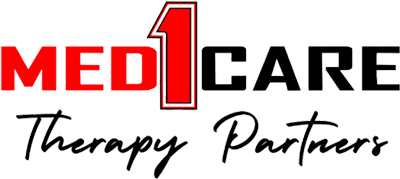 Med1Care Therapy Partner’s physical therapists provide personalized myofascial release to reduce pain and improve musculature health. Myofascial refers to the connective fascia tissue found through the muscles. If you are experiencing muscular tension, pain in your muscles or soft tissues, reduced range of motion or compromised joint mobility, myofascial release can provide relief.
Med1Care Therapy Partner’s physical therapists provide personalized myofascial release to reduce pain and improve musculature health. Myofascial refers to the connective fascia tissue found through the muscles. If you are experiencing muscular tension, pain in your muscles or soft tissues, reduced range of motion or compromised joint mobility, myofascial release can provide relief.
Myofascial release is an intense form of massage that stretches and kneads the junctures where tight muscle fascia meet and cross.Pressure is applied to target trigger points, to release knots.
Tools employed for the practice may include the therapist’s hands, a massage cane, foam roller or ball. This technique is effective for pain management, but it’s unlike standard massage because most people do not find the acute pressure relaxing.
What does myofascial release help?
A wide variety of muscle and soft tissue conditions are benefited by myofascial release, including sprains, joint pain, back pain, posture-related pain, cervicogenic headaches, sports injuries and overuse injuries. Body parts that are overused or held in static positions also benefit from the treatment.
Studies report myofascial release can help:
- Improve chronic back pain
- Reduce soreness following exercise (delayed onset muscle soreness)
- Decrease anxiety and stress
- Increase quality of life among patients with terminal illness, including cancer and multiple sclerosis (MS) patients
- Support pain management for a variety of conditions, including fibromyalgia
Applying pressure to fascial trigger points helps aid muscle contraction and movement in areas that include the arms, calves, feet, head, hips, jaw, lower back, neck, quads and shoulders.
Read more about myofascial release here.
How We Can Help
Med1Care Therapy Partner’s experienced therapists are trained in myofascial release. Your treatment plan may include massage with trigger point therapy, dry needling, transcutaneous electrical nerve stimulation (TENS), hot or cold therapy, stretching or massage to decrease pain and stiffness and improve tissue elasticity and mobility. We will partner with your physician to help you build a road to recovery.
Call us at 419.866.0555 to schedule a consultation. Our specialists will help you chart a course forward.
 Myofascial tissue is a web of multi-layered tissue that connects muscles, joints and bones throughout the body and holds organs in place. Between the tissue layers a liquid called hyaluronan allows for muscle stretch and range of motion, like grease. When underuse, overuse or injury causes the hyaluronan liquid to thicken, become sticky or dry you may notice pain or stiffness in the body.
Myofascial tissue is a web of multi-layered tissue that connects muscles, joints and bones throughout the body and holds organs in place. Between the tissue layers a liquid called hyaluronan allows for muscle stretch and range of motion, like grease. When underuse, overuse or injury causes the hyaluronan liquid to thicken, become sticky or dry you may notice pain or stiffness in the body.
 Myotherapy and physical therapy use many overlapping modalities. However, a myotherapist specifically targets the muscle’s fascia, and a physical therapist works on a wide range of musculoskeletal issues.
Myotherapy and physical therapy use many overlapping modalities. However, a myotherapist specifically targets the muscle’s fascia, and a physical therapist works on a wide range of musculoskeletal issues.
See also: What Is Physical Therapy?
